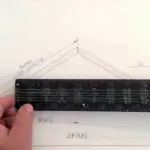Feng Shui Basics: Arrange Your Home for Flow
Have you ever walked into a room and immediately felt tense, or conversely, felt your shoulders drop in instant relaxation? This isn’t just aesthetics; it is energy. In ancient Chinese philosophy, this energy is called Qi (pronounced “chi”).
Feng Shui (literally “Wind-Water”) is the art of arranging your environment to enhance the flow of Qi. It is not about magic; it is about mindfulness. When your home flows, your life flows. Let’s break down the basics of arranging your space to invite wealth, health, and harmony.

A balanced space allows Qi to meander gently, rather than rushing through or getting stuck.
1. The Command Position
If you only learn one thing about Feng Shui, let it be the Command Position. This applies primarily to your bed, your desk, and your stove.
Why? Evolutionarily, this reduces anxiety. If your back is to the door, your nervous system remains on low-level alert. If you are directly in line with the door, the energy rushes at you too aggressively (often called the “coffin position” for beds).
2. The Bagua Map
The Bagua is the energy map of your home. Imagine laying a 3×3 grid over your floor plan, aligning the bottom edge with your front door. Each square corresponds to an aspect of your life.
Hover over the zones below to see what they represent:
Back Left
Element: Wood
Back Center
Element: Fire
Back Right
Element: Earth
Middle Left
Element: Wood
Center
Element: Earth
Middle Right
Element: Metal
Front Left
Element: Earth
Front Center (Door)
Element: Water
Front Right
Element: Metal
3. Balancing the Five Elements
Good Feng Shui is about balancing the five natural elements. If a room feels “off,” it usually has too much of one element or lacks another. Click the tabs below to understand how to use them.
Wood (Growth & Vitality)
Use for: New beginnings, health, and family growth.
Decor items: Live plants, bamboo, green colors, vertical shapes (pillars).
Too much wood? You might feel overwhelmed or rigid.
Fire (Passion & Energy)
Use for: Transformation, fame, and libido.
Decor items: Candles, lighting, triangular shapes, red/orange/pink colors, animal prints.
Too much fire? Can lead to anger or burnout.
Earth (Stability & Grounding)
Use for: Stability, peace, and protection.
Decor items: Ceramics, stones, square shapes, beige/yellow/sandy tones, low heavy furniture.
Too much earth? Can create sluggishness or boredom.
Metal (Clarity & Precision)
Use for: Focus, organization, and analytical thinking.
Decor items: Round shapes, metal finishes (gold, silver), white/grey colors.
Too much metal? Can create a space that feels critical, cold, or sterile.
Water (Wisdom & Abundance)
Use for: Career flow, relaxation, and money.
Decor items: Mirrors, free-form shapes, fountains, black/charcoal/deep blue colors.
Too much water? Can make you feel emotionally drowning or unable to make decisions.
4. The “Poison Arrows” (Sha Qi)
Look around your room. Are there sharp corners pointing directly at where you sit or sleep? These are called “Poison Arrows,” and they create attacking energy.

Soften your space. Notice how this round table encourages flow rather than sharp conflict.
The Fix: Soften sharp corners with a trailing plant, or place a lamp in front of the sharp edge to disperse the energy.
Your First Step: The Entryway
The mouth of Qi is your front door. If you do nothing else today, clear your entryway.
- Remove shoes and clutter that block the door from opening fully.
- Fix any squeaky hinges (which mimic the sound of crying).
- Add a plant or a bright light to welcome energy inside.
Start small. Feng Shui is not about perfection; it is about intention.

















